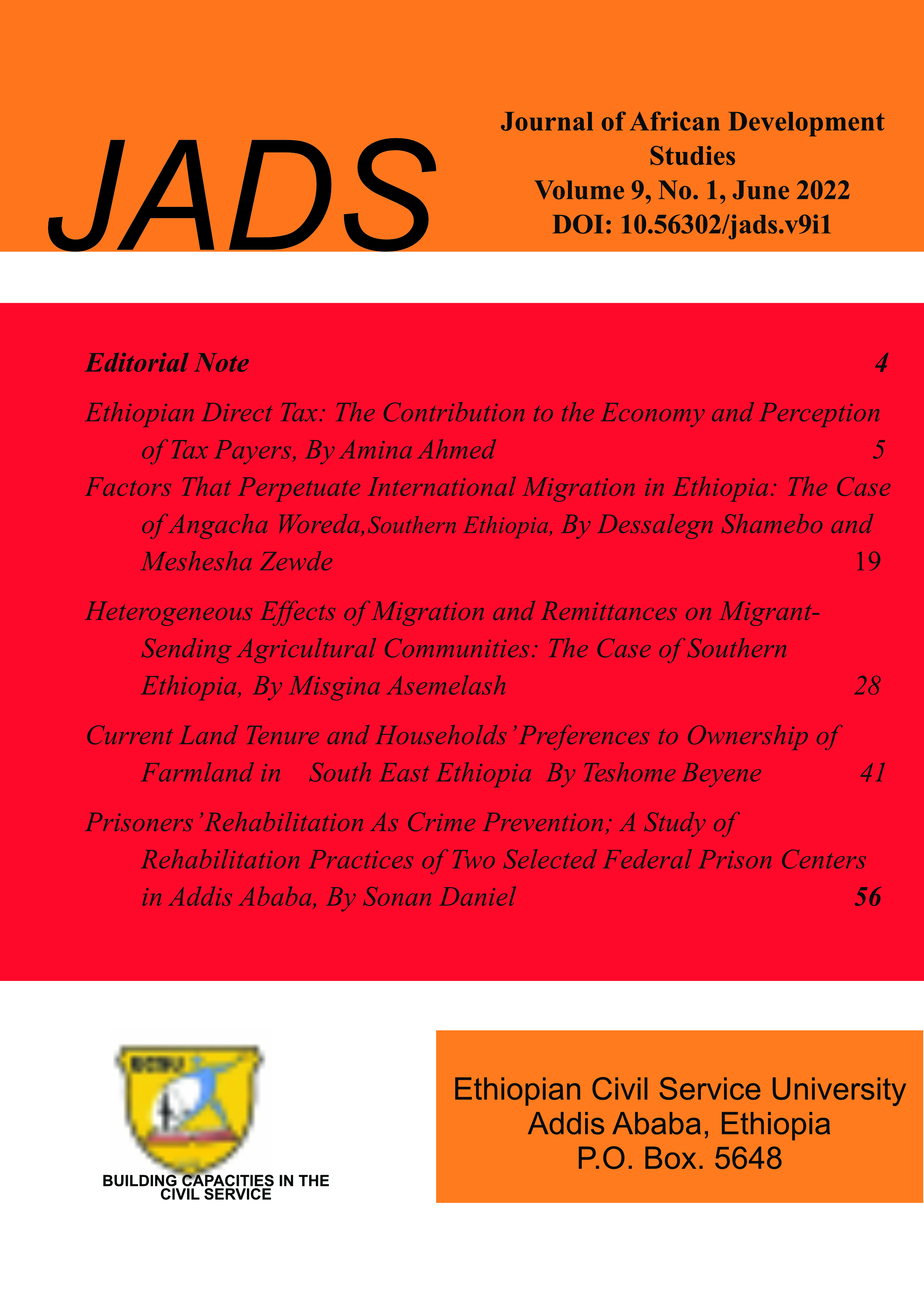Current Land Tenure and Households’ Preferences to Ownership of Farmland in South East Ethiopia
DOI:
https://doi.org/10.56302/jads.v9i1.8286Keywords:
Land tenure; Tenure arrangements; Land ownership; Arsi zone; EthiopiaAbstract
The current land policy of Ethiopia allows rural population to access farmlands. Nevertheless, households’ preference to state versus private ownership of farmland is an issue of hot debate. This study aimed at assessing the rural households’ preferences to ownership of farmlands in the dominion of the current land tenure in Ethiopia. The study followed mixed methods research design and data were generated by survey of 310 samples between May and Jun, 2019 as well as descriptive and inferential statistics were used for data analysis. Results indicated that the study area experienced small government land allocation, gender and age imbalanced land access with tenure insecurity. Evaluation of the current land tenure showed that 62.6% of the total respondents perceived the current land tenure is inauthentic. Indeed, 65.2% preferred to private ownership of farmland and regression model identified that sex, age, education, farmland size, number of oxen, and sharecropping-out were determinants of households’ preferences to private ownership of farmland. The study revealed that areas practicing insufficient farmland allocation face illicit farmland markets with the state ownership of farmland. Therefore, farming households should be contingent to legal rules for maintaining secured tenure arrangements. The local government offices should work in accordance with legal regulations in managing land tenure arrangements. The national government might review current land tenure ruling with state ownership of land for devising appropriate land ownership systems.
Downloads
Published
How to Cite
Issue
Section
License
Copyright (c) 2023 Journal of African Development Studies

This work is licensed under a Creative Commons Attribution-NonCommercial-ShareAlike 4.0 International License.





